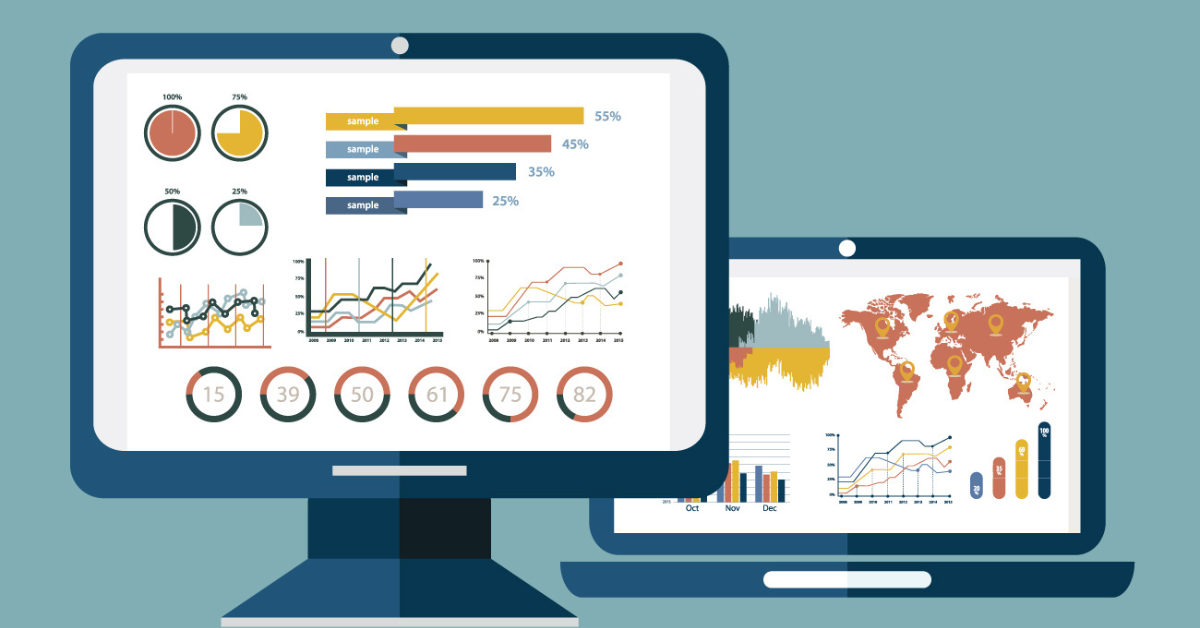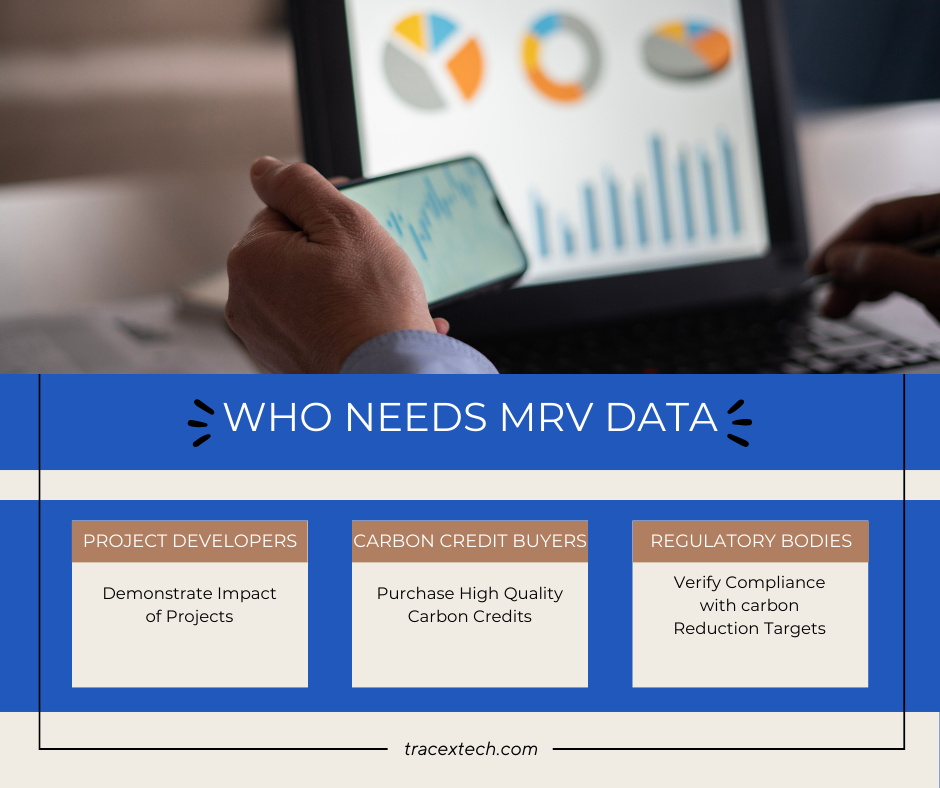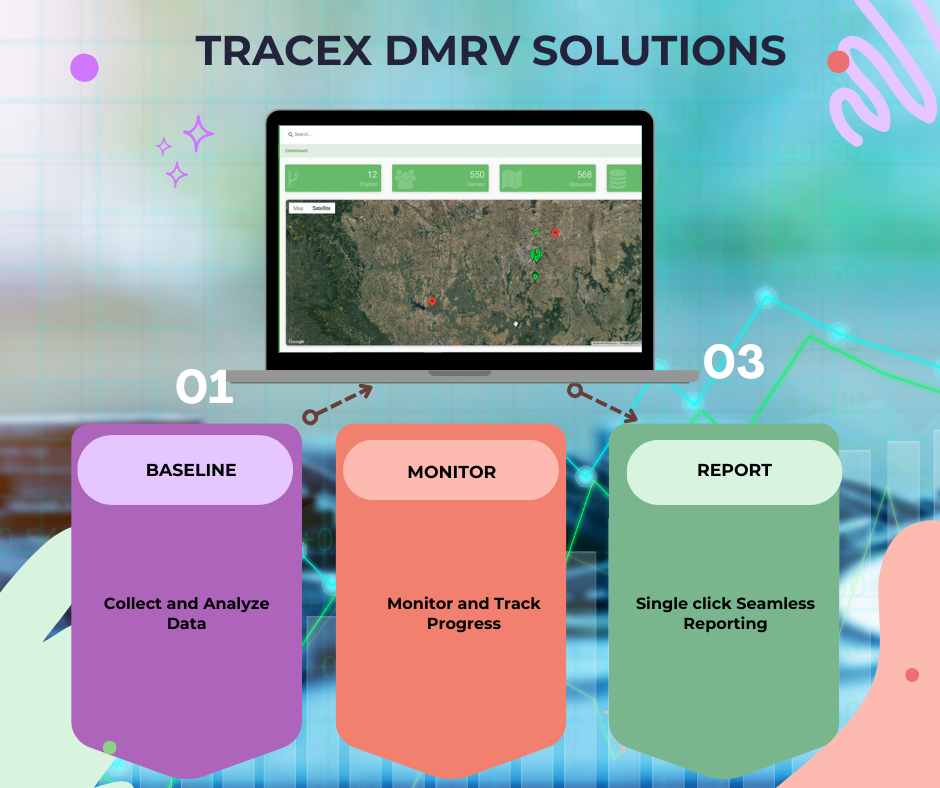Contact: +91 99725 24322 |
Menu
Menu
Quick summary: Discover how TraceX DMRV sets the gold standard for carbon projects. Explore its exceptional features, unrivalled advantages, and why it's the top choice for success in carbon offset initiatives.

Carbon Offsetting can be a puzzle. Is your chosen method effective, transparent and reliable? If you are investing in carbon offsetting you want assurance that your efforts are making a real difference in the fight against climate change. And you definitely don’t want to be left in the dark about where your contributions are going. That’s where TraceX DMRV solutions steal the show. It’s like the GPS for your carbon offsets and insets, providing transparency, accountability and effectiveness in your carbon reduction efforts.
According to a recent analysis by Accenture, countries representing 91% of global GDP have pledged to reduce their greenhouse gas emissions to net zero by 2050. In most decarbonization scenarios, reaching net zero emissions by 2050 would still require a significant volume of emissions to be permanently removed from the atmosphere annually, to the order of some 10 GtCO2e / year.
In this blog we will explore why TraceX DMRV solution is the best choice for anyone serious about carbon offsetting and insetting and making a meaningful impact on our planet. Discover how TraceX empowers you to track, verify and report and contribute to a sustainable future.
In the future, carbon offset markets are anticipated to become ubiquitous. Most companies, driven by their own emissions or those along their value chain, will engage with these markets as part of their decarbonization efforts. Businesses can assume various roles in the carbon offset markets. They can serve as a demand source, procuring credits to fulfil their net-zero and sustainability commitments. They can also act as market facilitators, managing risks, capitalizing on arbitrage opportunities, and enhancing market liquidity. Lastly, companies can take part on the supply side by investing in emission reduction or removal projects, thereby creating credits and retaining the option to trade and use the credits they generate.
Carbon offset projects are initiatives aimed at reducing or removing greenhouse gas emissions to compensate for emissions produced elsewhere. They play a crucial role in mitigating climate change. These projects can take various forms, such as reforestation, renewable energy, or methane capture. The core idea is to balance out emissions by investing in activities that absorb or reduce an equivalent amount of carbon dioxide, thus helping to achieve carbon neutrality.
In a world facing significant environmental challenges such as climate change and biodiversity loss, carbon offset projects play a crucial role. These projects contribute to the reduction of greenhouse gas emissions, which are a major driver of climate change. By investing in initiatives that capture or prevent emissions, companies, governments, and individuals can effectively mitigate their carbon footprints and help slow down the pace of global warming. Carbon offset projects are a practical way to address the urgent need for emission reductions and transition to a more sustainable, low-carbon future.
Effective monitoring and reporting are pivotal in the world of carbon offset projects. This is because they ensure transparency, accountability, and credibility in carbon offset initiatives. Without robust monitoring and reporting, it becomes difficult to verify whether the promised emissions reductions or removals are actually taking place. This can lead to scepticism and mistrust among stakeholders, which is detrimental to the success and integrity of such projects.
Monitoring involves continuous data collection to track the progress of a carbon offset project, while reporting entails transparently communicating this data to relevant parties. Proper monitoring and reporting mechanisms also aid in verifying the legitimacy of carbon credits generated by these projects.
As the importance of carbon offset projects continues to grow, so does the demand for accurate and reliable tools for monitoring and reporting their impact. To ensure the credibility and effectiveness of these projects, it is essential to have robust systems in place that can track emissions, measure carbon sequestration, and provide transparent and verifiable data. This demand is driven by stakeholders, including consumers, investors, and regulators, who seek assurance that carbon offset projects are delivering on their promises. Accurate monitoring and reporting tools are not only a requirement but also a source of trust and confidence in the carbon offset market.
Monitoring, reporting, and verification (MRV) systems have formed a fundamental element of the regulatory structure within market mechanisms, both in the context of the Kyoto Protocol and voluntary carbon markets. MRV encompasses a set of activities aimed at gathering data related to emissions, actions to mitigate emissions, and the backing provided for these endeavours. This encompasses a range of information, including the methodologies applied, underlying assumptions, and the specific data parameters utilized in the process.
Remarkably, many of these MRV processes persist in the present day.
In this evolving landscape, a comprehensive solution like TraceX’s Digital Monitoring, Reporting, and Verification (DMRV) system emerges as a valuable asset. TraceX offers a platform that combines cutting-edge technology, data integrity, and transparency to address the challenges associated with carbon offset projects. DMRV systems like TraceX provide end-to-end support, from data collection to verification, ensuring that emissions reductions are accurately measured and reported. They offer a centralized platform where project developers, verification bodies, and other stakeholders can collaborate, minimizing the risk of errors and enhancing the credibility of carbon offset projects. In a world where environmental accountability is paramount, TraceX’s DMRV solution is a vital tool for achieving effective and verifiable carbon offset outcomes.

TraceX DMRV (Digital Monitoring, Reporting, and Verification), is a comprehensive solution tailored to meet the intricate requirements of carbon offset projects. This platform is designed to streamline the processes involved in monitoring, reporting, and verifying carbon offset activities. It enables organizations to efficiently track, document, and confirm their emissions reduction and removal efforts. It plays a pivotal role in ensuring the transparency, accuracy, and integrity of carbon offset projects.

TraceX DMRV offers several distinct features that distinguish it in the field of carbon offset solutions.
Real-time Tracking: TraceX provides real-time monitoring capabilities, allowing users to access up-to-the-minute data on their offset projects.
Decentralized Verification: The platform employs decentralized verification, reducing the reliance on centralized authorities and enhancing trust in the verification process.
Immutable Ledgers: TraceX uses immutable ledgers, ensuring that the data collected and recorded cannot be altered or tampered with, maintaining the integrity of the project’s records.
Integration with Blockchain: TraceX incorporates blockchain technology to enhance security, transparency, and data integrity.
User-Friendly Interface: It offers an intuitive and user-friendly interface, making it accessible to a wide range of users, including project developers, auditors, and regulators.
TraceX DMRV is a powerful tool that not only simplifies and accelerates the processes associated with carbon offset projects but also contributes to increased transparency, accuracy, and trust within the carbon offset market.
The use of blockchain technology ensures that project data is recorded in immutable ledgers. This means that data once recorded cannot b altered or tampered with, providing a robust and transparent historical record of project activities. The platform allows for decentralized verification, reducing reliance of a single central authority. This enhances trust and credibility within the verification process as multiple stakeholders can participate reducing risk of manipulation or bias.
Real-time data ensures that project managers can make timely decisions based on the current information, enabling them to respond to issues or changes in project status. Real-time data also simplifies reporting process by automatically generating up-to-date reports, reducing the time and effort required for manual report compilation.
This platform is designed to align with industry standards and regulatory requirements, ensuring that the projects adhere to established guidelines. Automated compliance checks verifies that the projects meet the necessary criteria, thereby helping organizations avoid costly errors or penalties.
As carbon projects expand, the cloud solution can scale to accommodate the increased volume of data and transactions. The platform is designed to integrate with an organization’s existing systems and processes without causing significant disruptions and ensuring a smooth transition to advanced monitoring and reporting practices. The solution can work alongside other software or platforms, providing flexibility and adaptability in the complex landscape of carbon offset projects.
These multiple advantages contribute to the efficiency, trustworthiness and success of these projects.
Carbon offset projects often have various options for monitoring and reporting tools, ranging from manual data collection to other software-based solutions. While these alternatives may serve their purpose to some extent, TraceX DMRV stands out in several key aspects:
User-Friendly Interface: Many alternative solutions can be complex and challenging to navigate. In contrast, TraceX DMRV offers an intuitive and user-friendly interface that simplifies data collection and reporting. Project operators and field workers find it easy to input and manage data.
Mobile App Capability: Unlike some alternatives that rely solely on web-based platforms, TraceX DMRV offers mobile applications that can be used for data collection in the field. These apps are designed to be user-friendly and accessible, even in offline mode. This feature is especially valuable for projects in remote areas with limited connectivity.
Multilingual Support: TraceX DMRV is equipped with multilingual support, allowing users to interact with the system in their preferred language. This capability accommodates diverse project teams and stakeholders, making data collection and reporting more inclusive and efficient.
Real-Time Data Collection: One of the significant advantages of TraceX DMRV is its real-time data collection and reporting capabilities. While some alternatives may require manual data entry and periodic uploads, TraceX allows project operators to collect and sync data instantly, ensuring data accuracy and timeliness.
Offline Mode: TraceX’s mobile apps are designed to function seamlessly in offline mode. This is a game-changer for projects operating in areas with limited or no internet connectivity. Field workers can continue data collection without interruptions, and once they regain connectivity, the data is automatically synchronized with the system.
Data Security: TraceX DMRV utilizes blockchain technology to secure and authenticate data. Many alternative solutions may lack the same level of data security. Blockchain ensures data integrity and reduces the risk of tampering, offering a higher degree of trust in the reported information.
Data Privacy: TraceX ensures robust data privacy with ISO 27001, GDPR, and SOC 2 compliance. Trust us to safeguard your information as we adhere to the highest standards in data security.
Reduced Manual Effort: TraceX DMRV significantly reduces the manual effort required for data collection and reporting. This not only saves time but also minimizes the risk of human errors in the process. As a result, project operators can allocate their resources more efficiently.
Improved Data Accuracy: Real-time data collection and synchronization, along with user-friendly mobile apps, enhance data accuracy. This accuracy is crucial for carbon offset projects, as it directly impacts the credibility of generated carbon credits.
Streamlined Workflow: The user-friendly and intuitive nature of TraceX DMRV simplifies project operations and leads to a more streamlined workflow. This efficiency can contribute to overall cost savings and increased ROI.
TraceX DMRV’s combination of real-time data collection, offline mode functionality, and user-friendly mobile apps sets it apart from competing monitoring and reporting solutions. These features not only enhance data accuracy and security but also improve cost-effectiveness and ROI for carbon offset projects, making it a preferred choice for project operators and stakeholders.
In conclusion, TraceX Digital Monitoring and Reporting Solution (DMRV) emerges as the clear frontrunner for carbon projects. Its robust features, user-friendliness, real-time capabilities, compliance with industry standards, and cost-effectiveness set it apart as the ultimate choice. By enhancing transparency, ensuring data accuracy, and addressing key considerations such as integration, training, and support, TraceX DMRV not only simplifies the process of monitoring and reporting but also paves the way for high-quality, verifiable carbon credits. With TraceX DMRV, carbon offset projects are equipped to make a real and lasting impact on the journey toward a more sustainable and carbon-neutral future.
